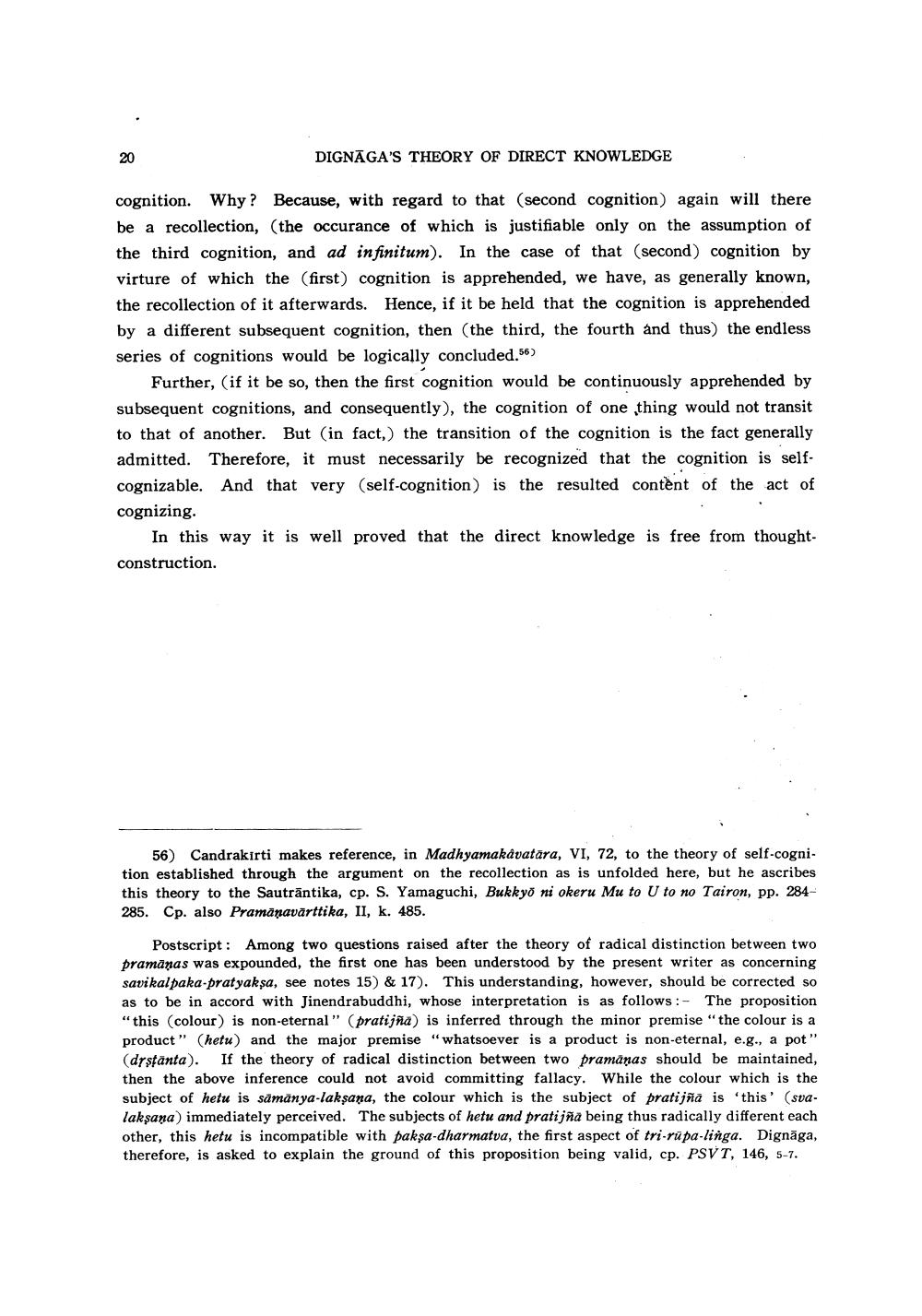________________ DIGNAGA'S THEORY OF DIRECT KNOWLEDGE cognition. Why? Because, with regard to that (second cognition) again will there be a recollection, (the occurance of which is justifiable only on the assumption of the third cognition, and ad infinitum). In the case of that (second) cognition by virture of which the (first) cognition is apprehended, we have, as generally known, the recollection of it afterwards. Hence, if it be held that the cognition is apprehended by a different subsequent cognition, then the third, the fourth and thus) the endless series of cognitions would be logically concluded.56) Further, (if it be so, then the first cognition would be continuously apprehended by subsequent cognitions, and consequently), the cognition of one thing would not transit to that of another. But (in fact,) the transition of the cognition is the fact generally admitted. Therefore, it must necessarily be recognized that the cognition is selfcognizable. And that very (self-cognition) is the resulted content of the act of cognizing. In this way it is well proved that the direct knowledge is free from thoughtconstruction. 56) Candrakirti makes reference, in Madhyamakavatara, VI, 72, to the theory of self-cognition established through the argument on the recollection as is unfolded here, but he ascribes this theory to the Sautrantika, cp. S. Yamaguchi, Bukkyo ni okeru Mu to U to no Tairon, pp. 284285. Cp. also Pramanavarttika, II, k. 485. Postscript : Among two questions raised after the theory of radical distinction between two pramanas was expounded, the first one has been understood by the present writer as concerning savikalpaka-pratyaksa, see notes 15) & 17). This understanding, however, should be corrected so as to be in accord with Jinendrabuddhi, whose interpretation is as follows:- The proposition "this (colour) is non-eternal" (pratijna) is inferred through the minor premise "the colour is a product" (hetu) and the major premise "whatsoever is a product is non-eternal, e.g., a pot" (drstanta). If the theory of radical distinction between two pramanas should be maintained, then the above inference could not avoid committing fallacy. While the colour which is the subject of hetu is samanya-laksana, the colour which is the subject of pratijna is 'this' (svalaksana) immediately perceived. The subjects of hetu and pratijna being thus radically different each other, this hetu is incompatible with paksa-dharmatva, the first aspect of tri-rupa-linga. Dignaga, therefore, is asked to explain the ground of this proposition being valid, cp. PSVT, 146, 5-7.




